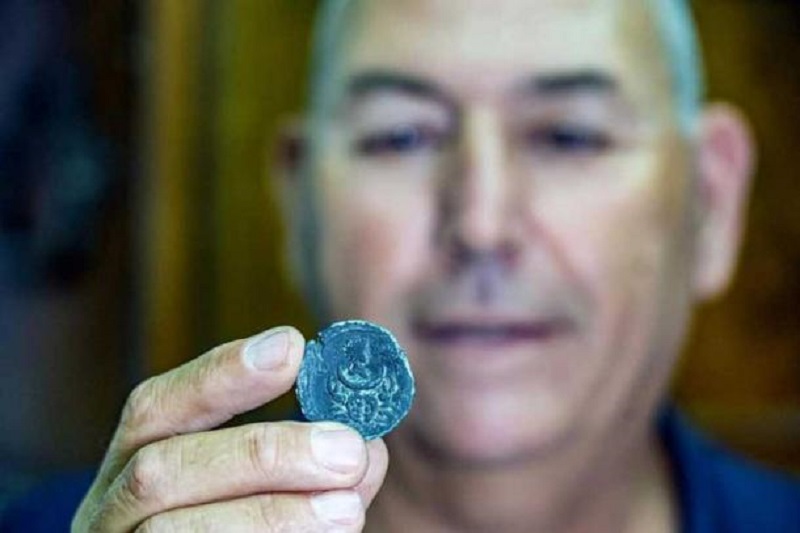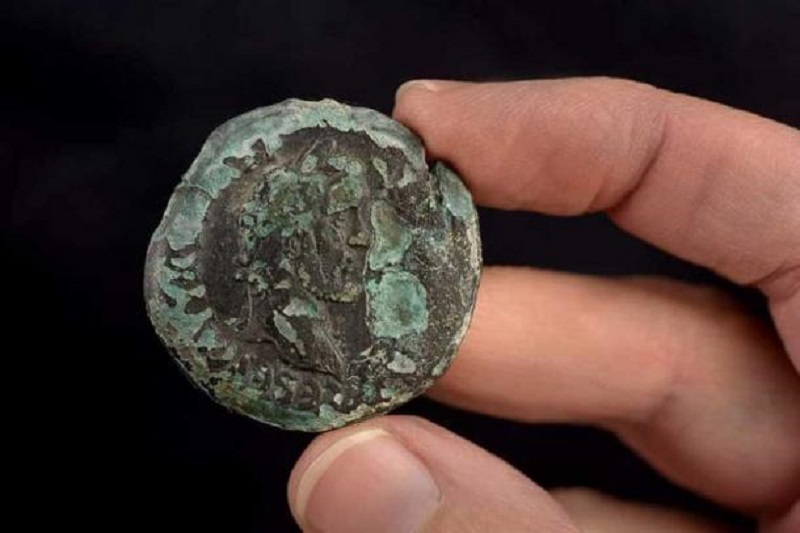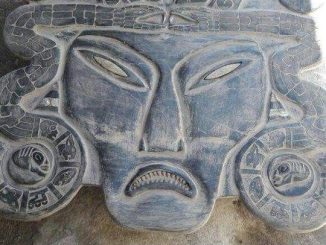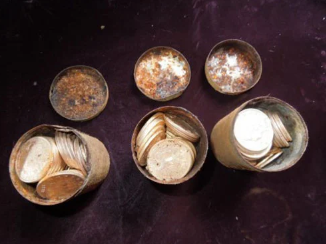A rare and beautiful bronze coin from the reign of Roman Emperor Antoninus Pius, who ruled as emperor between 138 and 161 AD, has been discovered off the coast of Haifa in Israel. The 1,850-year-old coin depicts the Roman moon goddess Luna and the Cancer zodiac sign on one side, while the other side features the Roman Emperor Antoninus Pius. It was discovered on Carmel Beach in Haifa by archaeologists from the Israel Antiques Authority (IAA) on Monday.
Israel Antiquities Authority Maritime Archeology Unit Director Jacob Sharvit holding the rare bronze Roman coin. (Yaniv Berman / Israel Antiquities Authority)
“Extremely Rare” Discovery of Goddess Luna Roman Coin
Found in the water, the coin is in remarkable condition, with its many engravings shedding considerable light on the origin of the coin, reports The Jerusalem Post. One side depicts the head of Antoninus Pius, whilst the other shows Luna and the Cancer zodiac sign, represented by a crab. These are all very interesting historical topics worth studying in their own right, but even more so when appearing together in one artifact.
Ancient Coin of Jewish Bar-Kokhba Rebellion Against Rome Unearthed
Hiker Finds Extremely Rare Gold Coin in Israel
“It is a rare addition to the National Treasures collection,” explained the director of the Marine Archeology Unit, Jacob Sharvit, when discussing the fact that it was the first time such a coin had been found off Israel’s coast. “These finds, which were lost at sea and disappeared from sight for hundreds and thousands of years, have been remarkable well preserved; some are extremely rare and their discovery completes parts of the historical puzzle of the country’s past,” he highlighted.
Roman-era coins have been found in Israel before, as the area was under Roman occupation from 57 BC onwards. Older Roman coins from the Bar Kokhba revolt (132 to 135 AD) were found in Jerusalem just two years ago. Incidentally, the Bar Kokbha revolt ended just two years prior to the reign of Antoninus Pius.
Portrait of the Roman Emperor Antoninus Pius on a 1,850-year-old Roman coin found off the Israeli Carmel Coast. (Yaniv Berman / Israel Antiquities Authority)
Antoninus Pius: A Break From the Past
The current find was found on the seabed during a survey to protect antiquities from coastal development, reports The Times of Israel. Dated “year eight” as was the custom with Roman coinage, it was dated to the 8th year of Antoninus Pius’ rule, 144/145 AD, and was produced in Alexandria, Egypt, another Roman bastion of the time. According to IAA numismatics expert Lior Sandberg, the coin is part of a series which was made up of 13 coins in total, 12 with their respective zodiac signs, and the final a complete zodiac wheel.
Pius is one of the so-called Five Good Emperors, with a non-military background and a largely peaceful reign. He was a skilled administrator, under whom the borders were secure, the economy profitable, and progressive legal reformers. In fact, under Pius, there was a massive surplus in the empire’s coffers. He never even left Rome and never went to battle, instead cementing better relationships with the non-Romans in his empire, a break from his predecessors like Hadrian, who had banned circumcision.
“During his rule, the empire’s relations with the Jews were greatly improved, the decrees of Hadrian were revoked, and Jews were allowed to practice circumcision. These steps led to amicable relations between the emperor and Rabbi Yehuda ha-Nasi,” says the IAA. They were referring to the 2nd Rabbi leader who is credited with the composition of the Mishnah.
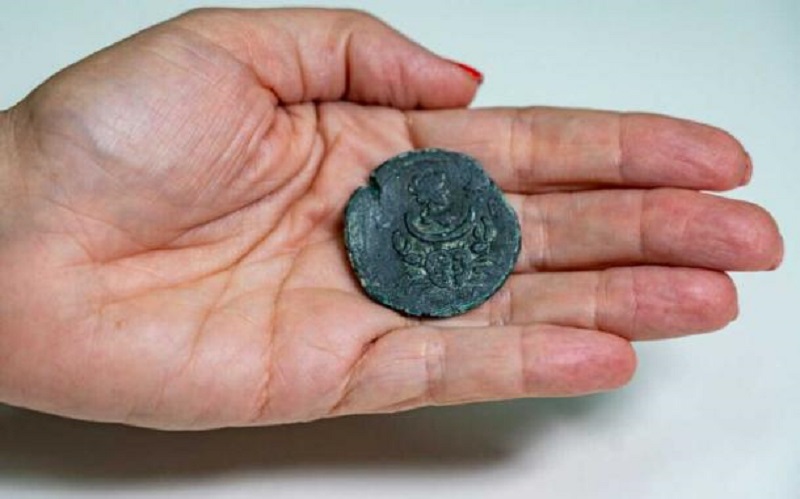
A 1,850-year-old Roman coin bearing the image of Luna, the goddess of the moon, found off the Carmel Coast in Israel. (Yaniv Berman / Israel Antiquities Authority)
Associating the Emperor with the Divine: Iconography on Roman Coins
Roman coins and their iconography are heavily associated with the depiction of emperors and images of gods. This was done in a bid to associate the emperor with the divine, and further legitimize imperial rule. In the case of Luna, and the moon in general, there were several important associations. For the Romans, Luna (the moon goddess) and Sol (the sun god), or day and night, were symbols used to communicate the continuity of Roman rule, along with peace, and Roman coins were an ideal way to communicate throughout their empire .
Luna was an important symbol in Roman society due to the multiple associations with the waxing and waning of the moon. For example, the etymology of the word lunacy is rooted in Luna, as in ancient Roman society it was believed that people’s moods and behaviors were linked to the cycle of the moon. Ancient Greek and Roman philosophers wrote frequently on the subject of mania and the moon, and the influence the celestial object had on our brains.
Rogue Priest Second Temple Silver Coin Found By Girl in Jerusalem
Diver Discovers 900-Year-Old Crusader Sword Off Coast of Israel
The lunar cycle being roughly the same length as a menstrual cycle also led to the development of notions of fertility around this. Romans were not the only ancient peoples who believed in this – several civilizations across the world had made this association. Within Roman mythology, Luna is depicted with a two-yoke chariot called a biga, drawn by horses or oxen, whilst riding a quadriga with Sol, to depict all four seasons.
Moving forward, the focus on Israel’s maritime archaeological expeditions will only increase. This is in recognition of Israel’s strategic position which allowed several empires to pass by or rule, causing great cultural diffusion. “Along the shores of the Mediterranean Sea in the State of Israel and its maritime area, there are many archaeological sites and finds that tell of connections that exited here in ancient times between the ports of the Mediterranean and the many countries along its shores,” Shavit concluded.
